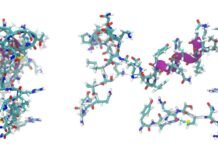ADHD affects people across various stages of their lives, impacting their ability to concentrate, manage impulses, and stay organised. While behavioural therapies are beneficial, medications often play the central role in effectively controlling ADHD symptoms and enhancing the quality of life. These medications are primarily categorised into two types: stimulants and non-stimulants.
Stimulant medications are the most commonly prescribed drugs for managing ADHD. They work by increasing levels of dopamine and noradrenaline in the brain – neurotransmitters that are essential for attention and impulse control. This increase enhances focus and reduces the impulsivity and hyperactivity frequently experienced by people with ADHD. The effects of stimulant medications are typically rapid, allowing patients to notice an improvement in symptoms shortly after administration. These benefits can last from a few hours to the entire day, significantly aiding in daily functioning.
Patients on stimulant medications often experience enhanced ability to focus on tasks, a calmer demeanour with less propensity to fidget, and improved decision-making capabilities due to reduced impulsive behaviours. But stimulants are not suitable for everyone. They may not be recommended for individuals with certain pre-existing conditions or those who experience adverse effects such as increased anxiety, sleep disturbances or appetite suppression.
Non-stimulant medications provide an effective alternative for those who may not tolerate stimulants well or for whom stimulants are deemed unsuitable due to health concerns. Unlike stimulants, non-stimulants do not primarily target dopamine. They work instead on increasing levels of norepinephrine, another neurotransmitter that helps with attention and impulse control. Some non-stimulants may also affect additional neurotransmitters that influence hyperactivity and attention processes.
A significant distinction of non-stimulants is they generally take longer to start working, sometimes several weeks. They offer a more sustained effect throughout the day, which can be beneficial for maintaining consistent symptom control. Non-stimulants are often chosen for patients who experience significant side effects with stimulants or have co-existing conditions such as anxiety or a history of substance misuse. They are also preferred for individuals with health issues like high blood pressure or epilepsy, where stimulants might pose additional risks.
Impacts and Considerations
Both types of ADHD medications aim to address core symptoms of ADHD that affect a person’s task initiation, productivity, time management and emotional regulation. They can markedly enhance a person’s capacity to start and complete tasks, sustain attention on work or academic pursuits, and manage emotional responses more effectively.
It’s also important to dispel a few common misconceptions about ADHD medications. They are not cognitive enhancers for people without ADHD. They correct specific neurotransmitter imbalances in those with the disorder, improving function and quality of life. Also, when used as prescribed, these medications do not lead to addiction.
Understanding the distinct roles and benefits of stimulant and non-stimulant medications is essential for healthcare professionals involved in the management of ADHD. These medications, when chosen and administered correctly, offer substantial improvements in daily functioning and overall well-being for those affected by ADHD.


























